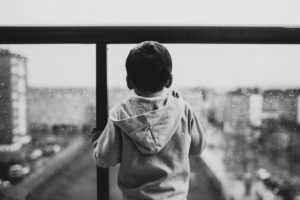Notifiable Incidents Involving Children
Definitions of Notifiable Incidents and Seriously Harmed
 A notifiable incident is an incident involving the care of a child which meets any of the following criteria:
A notifiable incident is an incident involving the care of a child which meets any of the following criteria:
- A child has died (including cases of suspected suicide), and abuse or neglect is known or suspected;
- A child has been ‘seriously harmed’ and abuse or neglect is known or suspected
- A looked after child has died (including cases where abuse or neglect is not known or suspected); or
- A child in a regulated setting or service has died (including cases where abuse or neglect is not known or suspected)
‘Seriously harmed’ in the context of the above includes, but is not limited to, cases where the child has sustained, as a result of abuse or neglect, any or all of the following:
- A potentially life-threatening injury;
- Serious and/or likely long-term impairment of physical or mental health or physical, intellectual, emotional, social or behavioural development.
This definition is not exhaustive. In addition, even if a child recovers, this does not mean that serious harm cannot have occurred.
The BSCP will ensure that its considerations on whether serious harm has occurred are informed by available research evidence.
Responsibilities of an organisation where a notifiable incident occurs
Where a serious incident occurs which meets the definition of a ‘notifiable incident’, the first step for any organisation is to take appropriate action to ensure the immediate safety of the child or minimise the impact of any serious harm.
In all circumstances staff should consult with their Safeguarding Lead/Senior Manager. The Safeguarding Lead/Senior Manager should contact the Local Authority to identify whether the criteria for notification has been met.
The organisation should have its own internal processes to ensure that:
- Where a child has suffered serious harm, the organisation will make a referral to the Local Authority
- The organisation’s Safeguarding Lead is informed of the incident/s and agrees with a Senior Manager within the organisation that the criteria has been met
- Where the child has died (whether this expected or unexpected), the correct procedures are followed, as outlined in our CDOP procedures
Responsibilities of the Local Authority
In accordance with Working Together , Buckinghamshire Council is required to report any incident that meets the criteria of a ‘notifiable incident’ to Ofsted and the BSCP promptly, and within five working days of becoming aware that the incident has occurred.
Responsibility of the BSCP
In accordance with the BSCP Learning and Improvement Framework, the Local Child Safeguarding Practice Review Sub Group will identify whether the case meets the threshold for a Local Child Safeguarding Practice Review (LCSPR) or whether another form of learning review would be useful. This decision must be ratified by the Chair of the BSCP and the BSCP will consult with the National Panel of Independent Experts.
Local Child Safeguarding Practice Review Process
For the avoidance of doubt, if an incident meets the criteria for a LCSPR (see below) then it will also meet the criteria for a notifiable incident. There will, however, be notifiable incidents that do not proceed through to a LCSPR. If a decision is made to conduct a LCSPR the BSCP Business Manager will inform Ofsted that a review will take place.
The Local Child Safeguarding Practice Review Sub Group will consider all notifications of serious childcare incidents. If, following consideration, it is identified that it is not appropriate to conduct a review and the incident does not relate to the unexpected death of a child, the BSCP will close the referral as ‘no further action’.
Criteria for LCSPR
A serious child safeguarding case is one where:
a) abuse or neglect of a child is known or suspected; and
b) either – (i) the child has died; or (ii) the child has been seriously harmed and there is cause for concern as to the way in which the authority, their Board partners or other relevant persons have worked together to safeguard the child